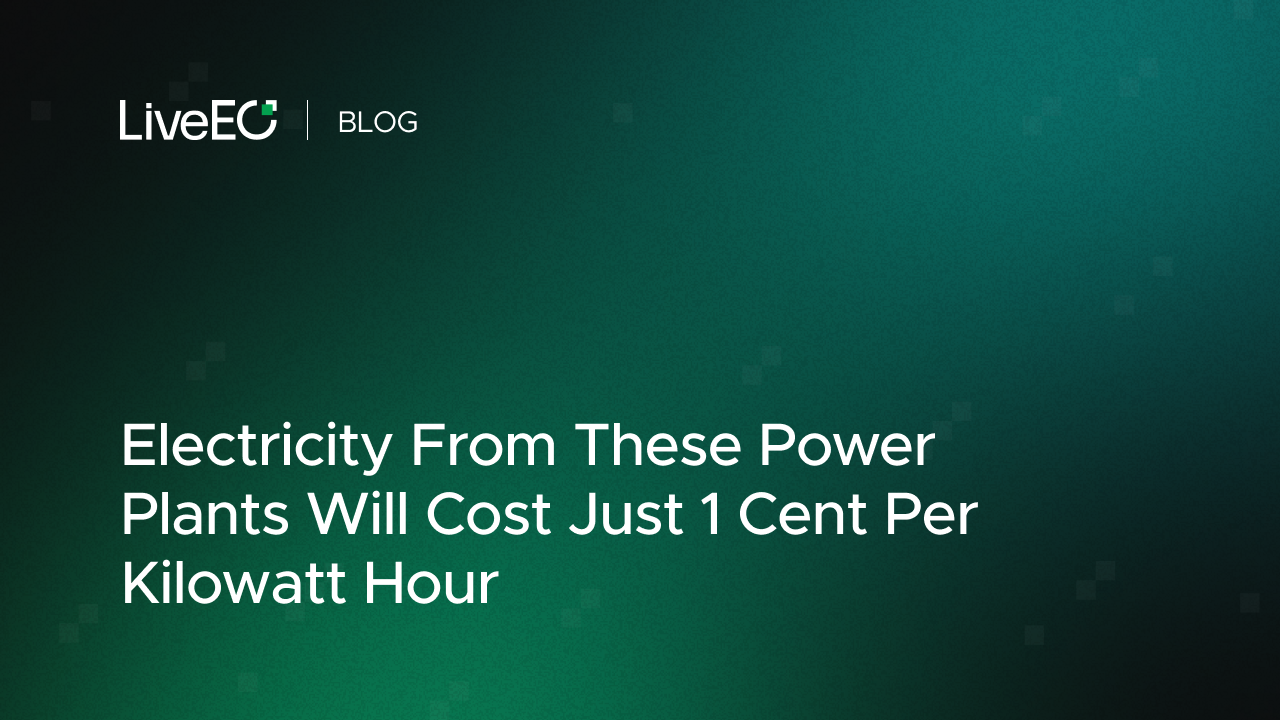In the desert, new solar parks are being built at record speed, which are constantly undercutting the price of electricity. This could lure energy-rich industries away from Europe. For e-fuels and green hydrogen, on the other hand, it's good news.
“Economy from above” is a collaboration between WirtschaftsWoche and LiveEO. This is a translation of the original article written in German by Thomas Stölzel.
Access the original article here.
In the great deserts of the world, the first large solar power plants are being built that will sell electricity for just one cent per kilowatt hour. The latest satellite images from LiveEO show how far their construction has progressed in Saudi Arabia and Abu Dhabi.
And how the next revolution is already on the horizon in Chile's Atacama Desert, for example - thanks to super-fast laid solar modules. This technology is likely to push the price of solar power in sunny regions below the one-cent mark in the near future.
For Germany and Europe, these developments are of great importance. In this country, energy prices for solar power are significantly higher. According to a recent study by the Fraunhofer Institute for Solar Energy Systems ISE, electricity costs between 3.1 and 5.7 U.S. cents for larger photovoltaic power plants, and between 11 and 13 cents for roof systems. Normal consumers in this country have to pay as much as 36 cents for electricity.
This large price difference between Germany and the deserts does not only ensure that energy-intensive sectors such as the steel and aluminum industries migrate to such sunny regions in the coming years. The Saudi energy minister has already announced that his country also wants to use the energy to produce green steel, green aluminum and green fertilizer. The cheap electricity can also flow to Europe in the form of e-fuels and green hydrogen, where it can compete with local energy producers. Something that could further fuel the debate on e-fuels and combustion engines currently being co-initiated by Transport Minister Volker Wissing (FDP).
The Al Shuaiba PV IP solar power plant, which is supported by the Saudi government, will sell its electricity for just 1.04 U.S. cents in the future. The 600-megawatt plant is being built 75 kilometers southwest of the holy city of Mecca on the Red Sea.
A satellite image taken on March 2 shows not only that a camp has been built here in recent months for workers to construct the plant. Engineers have drawn areas in the desert sand that apparently show the demarcation of the individual construction phases.
{{inline}}
Al Shuaiba PV IP is part of a second round of green energy tenders that the country between the Red Sea and the Persian Gulf is using to position itself for the post-oil era. This initiative also includes the Sudair solar project near the Saudi capital Riyadh. Although its electricity is somewhat more expensive at 1.24 cents per kilowatt hour, it is still considered the second cheapest in the world. After completing a total of seven such large-scale projects, the government wants the countryto be able to produce 4.1 gigawatts of electricity from renewable energy. This is roughly equivalent to the output of three medium-sized German nuclear power plants.
The low price is possible not only because the cost of solar panels has dropped massively in recent years, suitable land is abundant in the region and bureaucratic hurdles are low. According to industry insiders, the country also guarantees the purchase at the price for 25 years. This means that the investment does not have to be refinanced within ten years, as is the case elsewhere. This lowers the monthly financing costs and thus the price of electricity. In addition, the sun shines 3860 hours a year around Mecca. In North Rhine-Westphalia, the sun shines for 1560 hours, not even half as much.
Before the announcement of these Saudi plants last year, the two-gigawatt Al Dhafra power plant was considered the cheapest solar power plant in the world. A kilowatt-hour here costs 1.35 U.S. cents, according to the Abu Dhabi Power Corporation, offered by a consortium of France's EDF and China's Jinko Solar. These new power plants are also a signal of how massively prices for solar energy are falling in sunny regions. Around 2010, they were still well over 30 cents per kilowatt hour. It is therefore only a matter of time before the first plants will be offering electricity for well under one cent.
One company working towards this goal is the Australian solar plant manufacturer 5B. It has developed new types of solar modules that can be laid out very quickly by wheel loader, without the otherwise necessary costly substructure - much more densely staggered and with extremely few personnel. Until now, solar modules have usually been stored on a metal structure that is only assembled in the desert. And several meters of space have to be left between the individual rows.
According to the company 5B, the new technology can reduce energy costs by a further 20 percent because construction now accounts for a large proportion of total costs. According to the company, two teams of five employees each can equip the area of a soccer field with solar panels within one day. That's a world record and about ten times faster than such a number of people can set up previous systems. In addition, the systems produce up to twice as much electricity as conventional panels on the same area because they are laid more densely.
Last year, the company laid out a 10-megawatt plant in the Atacama Desert, on the edge of the AES Andes II B solar power plant. The area equipped with the new modules is clearly different from the rest of the plant, even when viewed from space. Because no desert floor shows through between the panels, it shines in a strong blue. In the meantime, such cells from 5B also exist in Panama and Australia. Chile, however, is seen by investors as an ideal location to become one of the world's most important exporters of green energy, for example in the form of green hydrogen or e-fuels that can be produced from solar power.







